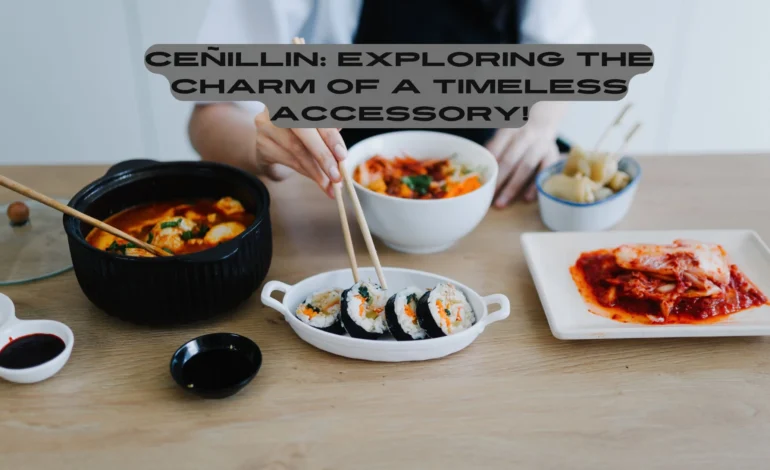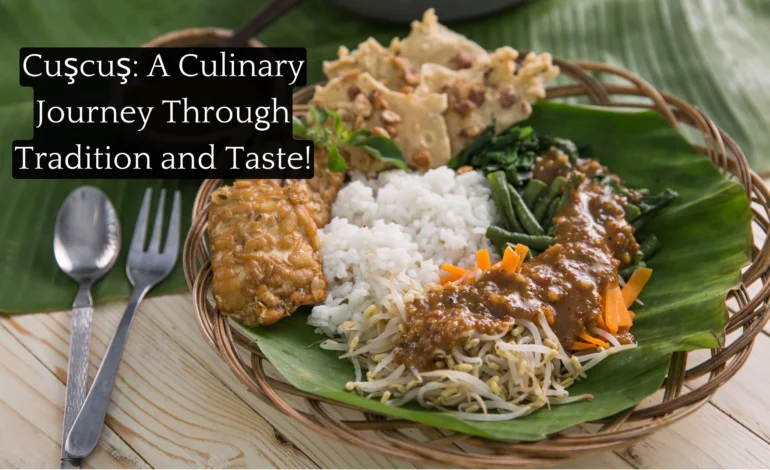
Ceñillin: Exploring the Charm of a Timeless Accessory!
In the vast world of fashion, certain accessories have the power to transcend trends and become timeless staples. The ceñillin is one such accessory, rooted deeply in cultural traditions and admired for its elegance and versatility.
A ceñillin is a type of belt or band used primarily as a fashion accessory, designed to cinch the waist and enhance the silhouette of the wearer.
This comprehensive guide will delve into the essence of the ceñillin, exploring its origins, evolution, cultural significance, and modern applications.
Table of Contents
What is ceñillin? – how has it maintained its relevance across generations!
The ceñillin is a distinctive type of belt or band, traditionally worn to cinch the waist and enhance the wearer’s silhouette. Originating from Latin American cultures, it is characterized by its intricate designs and craftsmanship.
Historically, the ceñillin was not only a practical garment accessory but also a symbol of cultural identity, reflecting the artistic and traditional values of its region. Crafted from natural fibres like cotton, wool, and silk, early ceñillins were often handwoven with elaborate patterns that narrated local stories and showcased the weaver’s skills. Over time, the ceñillin evolved from its utilitarian roots into a versatile fashion accessory, appreciated for its ability to add elegance and sophistication to both traditional and contemporary outfits.
The ceñillin has managed to maintain its relevance across generations by seamlessly integrating into modern fashion while preserving its cultural heritage. Its adaptability is evident in the way it has been embraced by contemporary designers who incorporate ceñillins into their collections, blending traditional craftsmanship with modern aesthetics.
The ceñillin’s enduring appeal lies in its ability to enhance various styles, from formal attire to casual outfits, making it a timeless accessory. Moreover, its significance in cultural ceremonies and celebrations ensures that it remains a cherished item, bridging the gap between historical tradition and modern fashion trends.
Origins and Historical Evolution:
The origins of the ceñillin can be traced back to traditional Latin American attire, where it served both functional and decorative purposes. Early ceñillins were crafted using natural fibres and were often embellished with intricate patterns that told stories of the region and its people.
Origins of Ceñillin:
The earliest forms of ceñillin were handwoven and used in various cultural and ceremonial contexts. These bands were integral to traditional dress, holding garments in place while simultaneously showcasing the wearer’s social status or regional identity. The use of natural materials such as cotton, wool, and silk was prevalent, with each piece reflecting the artistic skills of its maker.
Evolution Over Time:
Over the centuries, ceñillin has undergone a significant transformation. From its humble beginnings as a functional garment accessory, it has evolved into a statement piece in modern fashion. The introduction of new materials, such as leather and synthetic fibres, has expanded its versatility. Modern ceñillins often feature contemporary designs and embellishments, merging traditional craftsmanship with modern aesthetics.
Cultural Significance – cultural identity and artistic expression!
The ceñillin holds a unique place in the cultural heritage of various societies.
Ceñillin in Traditional Ceremonies:
In many Latin American cultures, the ceñillin is a vital element of traditional ceremonies. It is worn during important life events such as weddings, religious festivals, and rites of passage. The ceñillin often symbolizes virtues like purity, prosperity, and cultural pride. Its role in these ceremonies underscores its importance as a link between the past and the present.
Ceñillin in Modern Practices:
While deeply rooted in tradition, the ceñillin has seamlessly integrated into contemporary fashion. Designers and fashion enthusiasts have embraced this accessory, incorporating it into both casual and formal attire. The ceñillin’s ability to add a touch of elegance and sophistication makes it a popular choice for modern wardrobes.
Different Types of Ceñillin!
The variety of ceñillins available today reflects the creativity and craftsmanship of their makers:
Traditional Ceñillin:
Traditional ceñillins are often handwoven using natural materials such as cotton, wool, and silk. These pieces are characterized by their intricate patterns and craftsmanship, showcasing the rich cultural heritage of their region of origin. Traditional ceñillins are typically worn during ceremonial occasions and are valued for their authenticity and cultural significance.
Modern Variations:
Leather, synthetic fibers, and innovative textiles have expanded the possibilities for creating stylish and versatile ceñillins. Contemporary designs may feature minimalistic aesthetics, bold colors, and various embellishments, catering to diverse fashion preferences.
Materials and Craftsmanship – materials and craftsmanship!
Common Materials Used:
Ceñillins can be crafted from a variety of materials, each contributing to its overall style and durability. Common materials include:
- Natural Fibers: Cotton, wool, and silk are traditional materials used in ceñillin crafting. These fibers are prized for their texture and comfort.
- Leather: Leather ceñillins offer a classic and sophisticated look. They are durable and can be embellished with various designs.
- Synthetic Fibers: Modern ceñillins often use synthetic materials, which can mimic the look of natural fibers while offering increased flexibility and affordability.
Crafting Techniques:
Crafting a ceñillin involves several techniques, including:
- Weaving: Traditional ceñillins are often handwoven using intricate patterns that reflect cultural motifs.
- Embroidery: Some ceñillins feature detailed embroidery, adding texture and visual interest.
- Beading: Beaded ceñillins incorporate decorative elements that enhance their overall appearance.
How to Choose the Right Ceñillin!
Selecting the perfect ceñillin can enhance your style and complement your wardrobe:
Factors to Consider:
- Material: Choose a material that aligns with your personal style and the intended use of the ceñillin. Leather offers a timeless look, while fabric options provide a more casual feel.
- Design: Consider the design and embellishments of the ceñillin. Traditional designs may feature cultural patterns, while modern variations might offer minimalist aesthetics or bold statements.
- Fit: Ensure the ceñillin fits comfortably around your waist without being too tight.
Tips for First-Time Buyers:
For first-time buyers, starting with a classic design is a good approach. Choose a ceñillin that can be easily integrated into various outfits. Research the cultural significance and craftsmanship of the ceñillin you’re interested in to ensure an informed and respectful purchase.
Ceñillin in Fashion – versatility and unique charm!
Ceñillin as a Fashion Statement:
In contemporary fashion, the ceñillin is celebrated for its ability to add a distinctive touch to any outfit. Designers often incorporate ceñillins into their collections to introduce an element of cultural richness and authenticity. Whether paired with a simple dress or a statement coat, the ceñillin can elevate any ensemble.
Styling Tips:
- Over a Dress: Wrap a ceñillin around the waist of a flowy dress to create a more defined silhouette and add a touch of sophistication.
- With High-Waisted Pants: Add a ceñillin to high-waisted pants or skirts to accentuate your waist and elongate your legs.
- Layering: Use a ceñillin over a long cardigan or chunky sweater to add structure and style to a cozy look.
- Belted Coats: In colder weather, cinch a ceñillin over a coat to give your outerwear a tailored and polished appearance.
FAQS:
What is a ceñillin?
A ceñillin is a decorative belt or band used to cinch the waist, often featuring intricate designs and craftsmanship. It combines functionality with cultural and aesthetic significance.
How did the ceñillin originate?
The ceñillin originated in Latin American cultures, where it was used both for practical purposes and as a symbol of cultural identity. Its designs reflect regional artistry and traditional values.
Why is the ceñillin important in modern fashion?
In modern fashion, the ceñillin adds elegance and sophistication to various outfits, bridging traditional craftsmanship with contemporary styles. Its versatility makes it a timeless accessory.
How should I care for my ceñillin?
To care for a ceñillin, clean it according to its material—hand wash fabric ceñillins and wipe leather ones with a damp cloth. Store it in a cool, dry place away from direct sunlight.
Conclusion:
The ceñillin stands as a remarkable testament to both cultural heritage and evolving fashion. Its ability to blend traditional craftsmanship with modern style ensures its enduring relevance. By understanding its historical roots and versatile applications, one can fully appreciate the ceñillin as more than just a decorative accessory—it is a symbol of artistry and identity. Whether you’re incorporating it into everyday wear or using it for special occasions, the ceñillin offers a unique way to connect with rich cultural traditions while embracing contemporary fashion trends.





